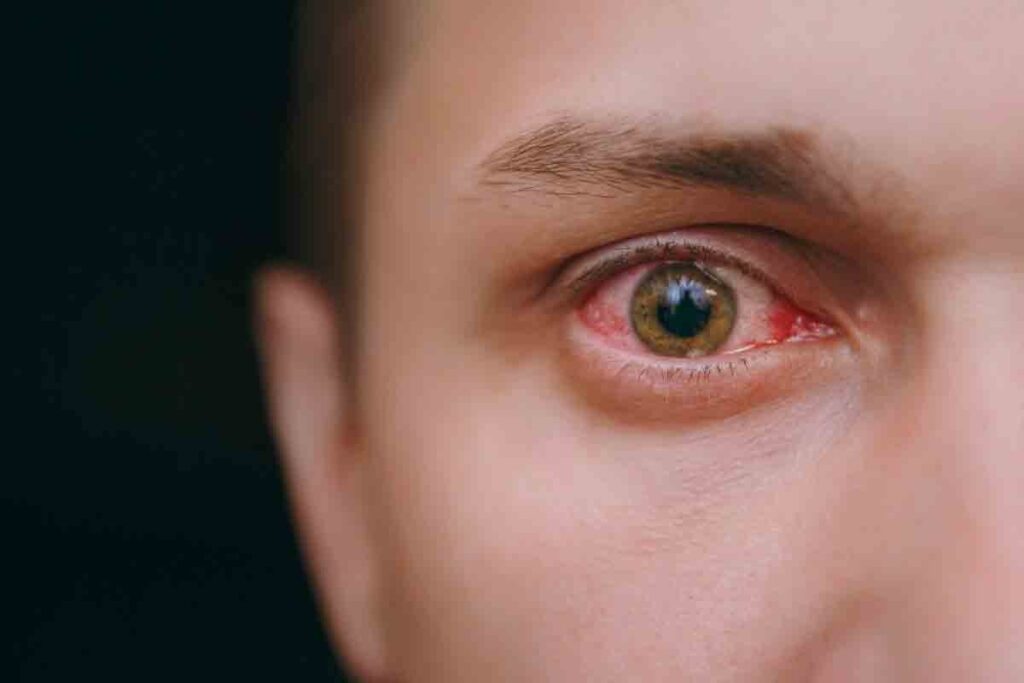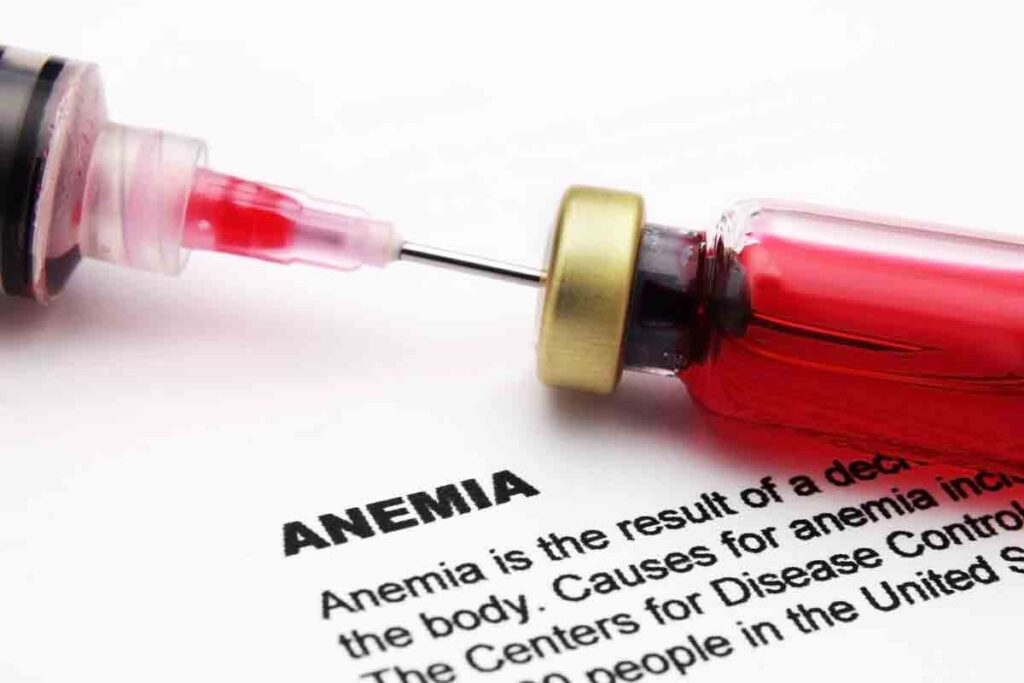Last Updated on October 21, 2025 by mcelik

At LivHospital, eye findings can offer quick clues about blood health, and our clinicians integrate validated research with bedside assessment to guide care. The eye anemia test focuses on conjunctival pallor—the color of the inner lower eyelid—where a healthy pink to red tone suggests adequate hemoglobin, while a notably pale appearance can signal low hemoglobin consistent with iron deficiency anemia. Because lighting, skin tone, and other conditions can affect appearance, this screening cue is used to prompt proper lab testing rather than replace it.
Iron deficiency anemia commonly causes fatigue, weakness, shortness of breath, fast heartbeat, headaches, and reduced exercise tolerance, and these symptoms alongside pale inner eyelids strengthen the case for blood tests. The eye anemia test is helpful for early flagging, but confirmation requires a complete blood count, ferritin, transferrin saturation, and evaluation for causes such as menstrual blood loss or gastrointestinal bleeding. Early identification enables targeted therapy, including addressing bleeding sources, optimizing diet, and evidence‑based iron supplementation regimens.
Our team evaluates additional ocular signs when clinically relevant, including overall conjunctival color, retinal appearance if vision changes are present, and any signs of dry eye or inflammation that could confound the impression. This balanced approach lets patients benefit from noninvasive screening while still getting precise diagnosis and treatment planning. If you notice persistent pallor of the inner eyelid, especially with fatigue, dizziness, breathlessness, or rapid heartbeat, arrange testing promptly and avoid starting iron without medical guidance.

Anemia is a complex medical condition that affects more than just fatigue. It impacts various aspects of overall health. To understand anemia, we must explore its far-reaching effects on the body.
Anemia is when there are fewer red blood cells or they can’t carry enough oxygen. This leads to tissue hypoxia. Iron deficiency is a common cause of anemia. Iron is key to making hemoglobin, which carries oxygen to the body’s tissues.
Iron deficiency affects many body systems. It can cause pale skin and brittle nails. It also impacts the heart, making it work harder to get oxygen. This can lead to irregular heartbeats.
Common Symptoms of Anemia Beyond the Eyes
Anemia’s symptoms go beyond the eyes, affecting health in many ways. Common symptoms include:
| Symptom | Description |
| Fatigue | A persistent feeling of tiredness or exhaustion |
| Shortness of Breath | |
| Dizziness | Lightheadedness or feeling faint |
| Headaches | Frequent or recurring headaches due to a lack of oxygen |
Understanding these symptoms is key to early diagnosis and treatment of anemia. Recognizing iron deficiency’s impact on the body helps healthcare providers offer better care.
Me

Our eyes can tell us a lot about our blood health. They act as an early warning system for health issues. The eyes need enough oxygen to work properly. Changes in blood flow and oxygen can show up in the eyes, making them a key indicator of health.
The eyes are like windows to our health. They can show signs of problems in the body. Anemia, caused by low iron or red blood cells, can show in the eyes. Studies show that anemia can affect the eyes’ color and function (PMC9868202). Doctors say, “The eyes are special for checking health because they are clear and easy to see.”
“The eyes are a unique site for assessing systemic health due to their transparency and accessibility.”
For example, pale conjunctiva can mean anemia. The conjunctiva, a thin membrane over the eyes, turns pale with low hemoglobin. This is a sign that needs a doctor’s check-up.
Good blood flow is key to healthy eyes and vision. Iron deficiency anemia can mess with blood flow, affecting the eyes. Without enough iron, the body can’t make enough hemoglobin. Hemoglobin carries oxygen to the eyes and other parts of the body.
Poor blood flow can cause dry, irritated, or tired eyes. In bad cases, it might lead to serious vision problems. So, keeping blood flow healthy is important for eye and overall health.
Anemia can be found by looking at the conjunctiva for pallor. This method is great for first checks and in places with fewer resources.
Conjunctival pallor is when the conjunctiva, the thin layer over the white part of the eyes, looks pale. It’s a key sign for anemia, like iron deficiency anemia. If the conjunctiva looks pale, it might mean there’s less hemoglobin in the blood.
To check for conjunctival pallor, do the following:
This check is non-invasive and fast. It’s perfect for a first look.
A healthy conjunctiva usually looks pinkish. But an anemic one is pale or washed out. The difference is clear, helping doctors make a quick guess.
Learning about conjunctival pallor helps us diagnose and treat anemia better.
Anemia can show itself in many ways in the eyes. These signs help doctors understand how severe anemia is and its effects on the body.
Anemia can cause big changes in the retina, like retinal hemorrhages. This happens because there aren’t enough red blood cells and hemoglobin. Research shows that these changes can tell us how bad anemia is.
A fundus exam can find signs of anemia. These include pale retina, twisted blood vessels, and sometimes bleeding. This exam lets doctors see the retina and blood vessels up close. It shows how anemia affects blood vessels.
The white part of the eye, the sclera, can also show anemia signs. In anemic people, the sclera might look blue or have a bluish color. This is because the tissue is thinner, making veins more visible. This is more obvious in severe cases.
These eye signs show why eye exams are key in diagnosing and treating anemia. By spotting these signs, doctors can act quickly. This helps improve how well patients do.
Vision changes, like blurry vision, can be a sign of iron deficiency. It’s key to know this link. Iron is important for healthy vision, and not enough can cause eye problems.
Iron helps make hemoglobin, which carries oxygen to the body, including the eyes. Low iron means the eyes might not get enough oxygen. This can cause vision issues, like blurry vision.
The retina, key to vision, is very sensitive to oxygen changes. Iron deficiency can hurt retinal function, leading to vision problems.
Research shows that anemic people often have vision issues, including blurry vision. Fixing iron deficiency can help vision, showing the need to tackle nutritional gaps.
Doctors have seen changes in the retina and other eye parts in anemic patients. This supports the link between iron and vision health.
If you have ongoing blurry vision or vision problems, see a doctor. Iron deficiency is just one cause, but a full check-up can find the real issue.
If iron deficiency is found, treatment usually includes supplements and diet changes. Watching vision changes during treatment helps see if it’s working.
Knowing how iron affects vision health helps keep eyes and overall health in check.
Iron is key to healthy vision. Its lack can cause eye problems. Anemia is one known issue, but iron deficiency affects the eyes in more ways.
Dry eyes are common with iron deficiency. Dry eyes happen when the eyes don’t make enough tears. This leads to irritation and discomfort. Iron helps the body make tears properly.
When iron is low, tear quality and amount suffer. Symptoms include:
Iron deficiency can also cause light sensitivity or photophobia. This makes eyes more sensitive to light. It can hurt or feel uncomfortable in bright lights. The exact reason is not clear, but iron might play a part in how we see light.
Those with light sensitivity might:
Eye fatigue is another symptom of iron deficiency. Without enough iron, eyes can’t work right. This leads to tiredness or strain, often after focusing, like reading or screen time.
To reduce eye fatigue, try:
Knowing these eye symptoms can help catch and manage iron deficiency early. If you notice any, see a healthcare professional.
New technology makes finding anemia easier and more accurate. We’re using cool tools to help doctors do their jobs better. This makes healthcare more efficient and effective.
The big news is smartphone-based conjunctival analysis. It uses phone cameras to check the color of the conjunctiva. This is a non-invasive and affordable way to spot anemia.
Studies show phone apps can guess hemoglobin levels by looking at the conjunctiva’s color. For example, a Purdue University study found that a phone app can detect anemia by taking a photo of the eyelid.
Artificial intelligence (AI) is making hemoglobin estimation more precise. AI looks at conjunctiva and retina images to guess hemoglobin levels. This helps catch anemia early and track treatment success.
Digital photography is changing how we diagnose from afar. Doctors can take eye pictures and send them for expert review. This helps reach more people, even in areas with less access to healthcare.
These tech breakthroughs are changing how we find and manage anemia. By using technology in healthcare, we can help patients more and make things run smoothly.
Eye exams are a big deal in finding anemia. We need to know how good they are and what they can’t do. This helps us see if they can really help diagnose anemia.
Ocular signs, like pale conjunctiva, are key in spotting anemia. We look at how well these signs work. This means seeing if they catch anemia correctly and if they don’t mistake others for it.
Studies say pale conjunctiva is a good sign of anemia, but it’s not perfect. How well it works depends on who’s looking and if other eye issues are around.
Eye exams have big limits. They’re based on what the eye doctor sees, which can change a lot. Things like the doctor’s skill and the room’s light matter a lot.
Also, not every anemia shows up in the eyes. Some people might look fine but actually have anemia. So, just looking at the eyes isn’t enough to be sure.
Lab tests are the best way to find anemia. Blood tests give exact numbers on hemoglobin and other signs of anemia. This is more reliable than just looking at the eyes.
Eye exams can be a first step, but lab tests are needed to be sure. This way, doctors can give the right treatment to patients.
In short, eye exams are helpful in finding anemia, but they’re better with lab tests. Knowing the strengths and weaknesses of eye exams helps doctors make better choices.
Healthcare providers are now using eye exams to find anemia early. Eye exams are a simple and effective way to check for anemia. They are great when more complex tools are not available.
Eye exams fit right into regular check-ups. They help spot anemia early. During these exams, doctors look for signs like pale conjunctivae.
They check the conjunctiva, the white part of the eyes and eyelids. This helps find anemia that might not show up in other tests.
In places with few resources, eye exams are key for sorting patients. Without lab tests, doctors use eye signs to decide who needs more care.
| Setting | Primary Diagnostic Method | Role of Eye Examination |
| Resource-Limited | Clinical Assessment | Triage and Initial Screening |
| Well-Equipped Facilities | Laboratory Tests | Supplementary Diagnostic Aid |
When eye signs of anemia are found, doctors must act fast. They do lab tests to confirm anemia and find its cause.
Follow-up protocols may include:
By adding eye exams to their tools, doctors can catch anemia sooner. This leads to better care and outcomes for patients.
Eye assessment is a key tool for spotting anemia, which is very helpful in places where lab tests are hard to get. Doctors can see signs of anemia in the eyes, like pale conjunctiva. This helps them send patients for more tests and treatment.
New tech, like smartphone apps and AI, is making eye checks better for finding anemia. These tools can help doctors catch anemia early. This means patients can get help sooner.
Adding eye exams to regular check-ups can help find people who need more tests. This helps fight anemia in communities. Using eye checks as a way to find anemia can lead to better care and results for patients.
To check for anemia in the eyes, look at the conjunctiva. This is the thin membrane over the eye’s white part. A simple eye check can show signs of anemia, like paleness in the conjunctiva.
Yes, low iron can cause blurry vision. This is because the eyes don’t get enough oxygen. Iron helps the eyes work properly, so without enough, vision can get blurry.
Signs of anemia in the eyes include paleness in the conjunctiva. There can also be changes in the retina and sclera. An eye exam can spot these signs showing anemia.
Yes, anemia can affect vision. It can cause blurry vision, dry eyes, and sensitivity to light. Low iron means the eyes don’t get enough oxygen, leading to vision problems.
Iron deficiency can cause eye symptoms like dryness, irritation, and sensitivity to light. It can also make the eyes tired. Without enough oxygen, the eyes can feel uncomfortable and have vision issues.
Yes, eye exams can spot anemia by looking for signs like conjunctival pallor. While not perfect, eye exams are useful, even in places where resources are limited.
Conjunctival pallor is when the conjunctiva looks pale. It’s a sign of anemia. A simple eye exam can find this sign.
Eye exams can be good for finding anemia, but they’re not perfect. They should be used with lab tests for a sure diagnosis. The signs in the eyes can vary, so lab tests are key to confirm anemia.
Yes, new tech like smartphone apps and AI can make eye exams better for finding anemia. They make it easier and more accurate to check for anemia.
Doctors use eye exams as a first step to check for anemia. They do these exams during regular visits and in places with less resources. If they find signs, they follow up with lab tests.
Yes, low iron can lead to vision issues like blurry vision. This is because the eyes don’t get enough oxygen. Iron is important for clear vision.
Yes, iron deficiency can cause vision changes, like blurry vision. This is because the eyes need enough oxygen to work right. Iron is key for healthy vision.
Subscribe to our e-newsletter to stay informed about the latest innovations in the world of health and exclusive offers!
WhatsApp us